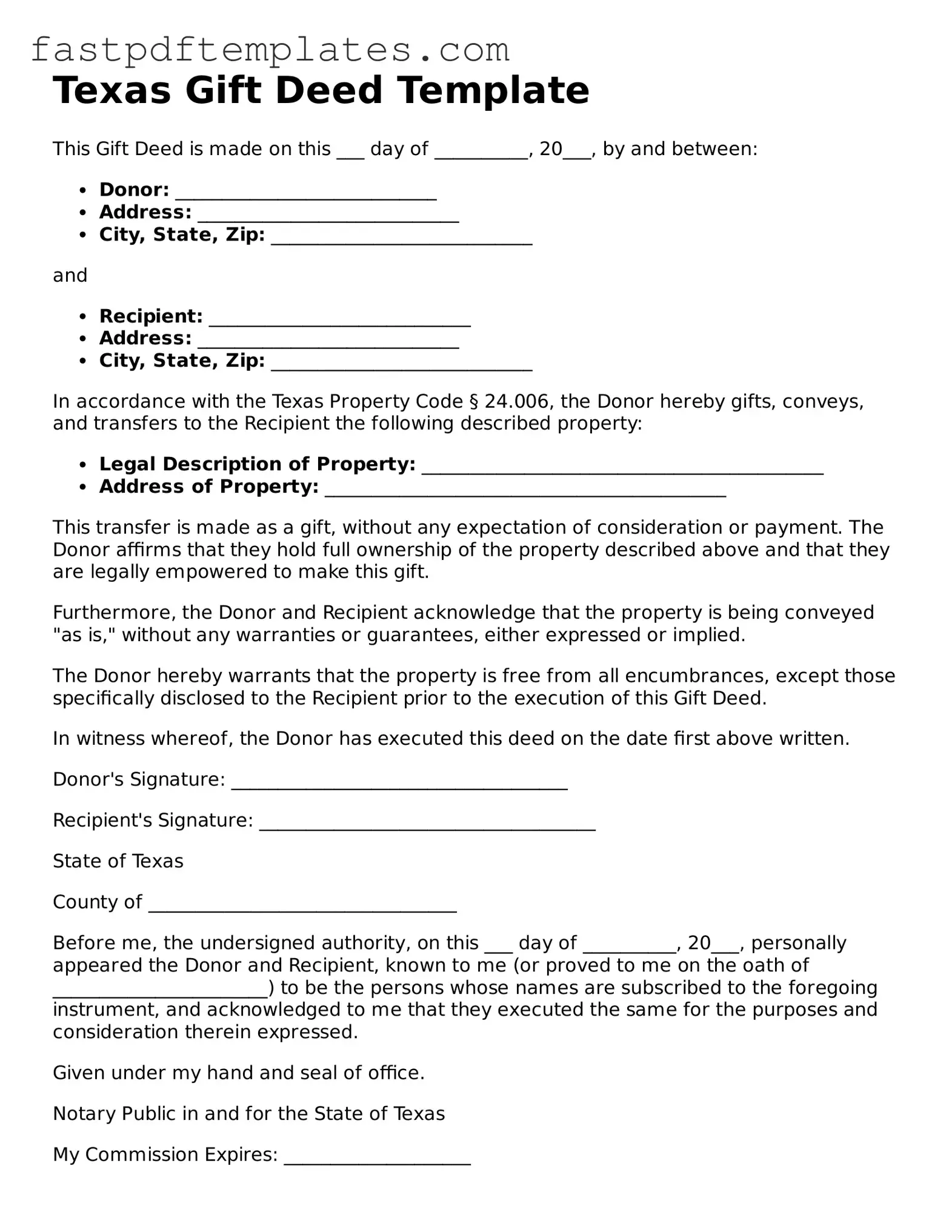Texas Gift Deed Template
This Gift Deed is made on this ___ day of __________, 20___, by and between:
- Donor: ____________________________
- Address: ____________________________
- City, State, Zip: ____________________________
and
- Recipient: ____________________________
- Address: ____________________________
- City, State, Zip: ____________________________
In accordance with the Texas Property Code § 24.006, the Donor hereby gifts, conveys, and transfers to the Recipient the following described property:
- Legal Description of Property: ___________________________________________
- Address of Property: ___________________________________________
This transfer is made as a gift, without any expectation of consideration or payment. The Donor affirms that they hold full ownership of the property described above and that they are legally empowered to make this gift.
Furthermore, the Donor and Recipient acknowledge that the property is being conveyed "as is," without any warranties or guarantees, either expressed or implied.
The Donor hereby warrants that the property is free from all encumbrances, except those specifically disclosed to the Recipient prior to the execution of this Gift Deed.
In witness whereof, the Donor has executed this deed on the date first above written.
Donor's Signature: ____________________________________
Recipient's Signature: ____________________________________
State of Texas
County of _________________________________
Before me, the undersigned authority, on this ___ day of __________, 20___, personally appeared the Donor and Recipient, known to me (or proved to me on the oath of _______________________) to be the persons whose names are subscribed to the foregoing instrument, and acknowledged to me that they executed the same for the purposes and consideration therein expressed.
Given under my hand and seal of office.
Notary Public in and for the State of Texas
My Commission Expires: ____________________
